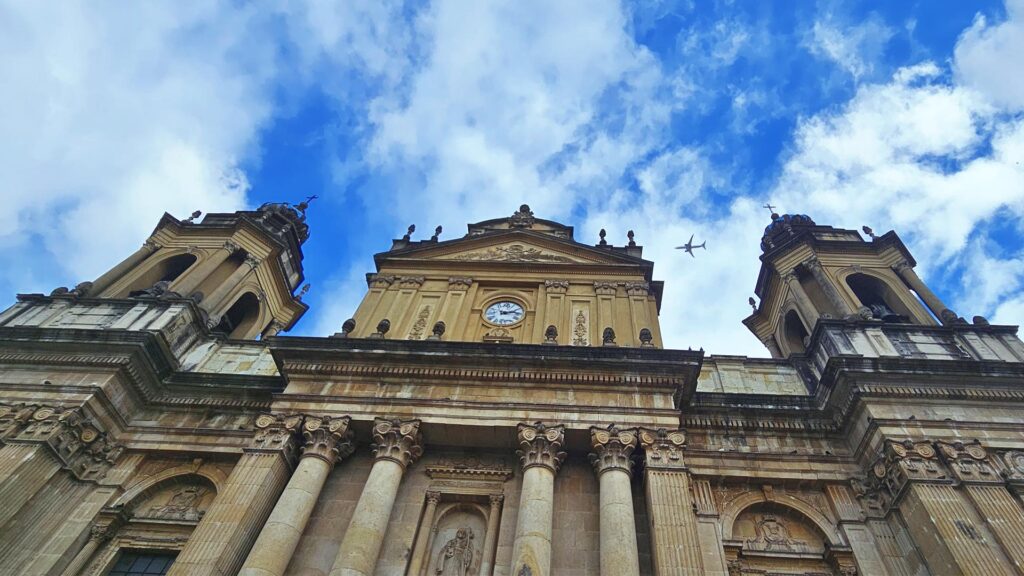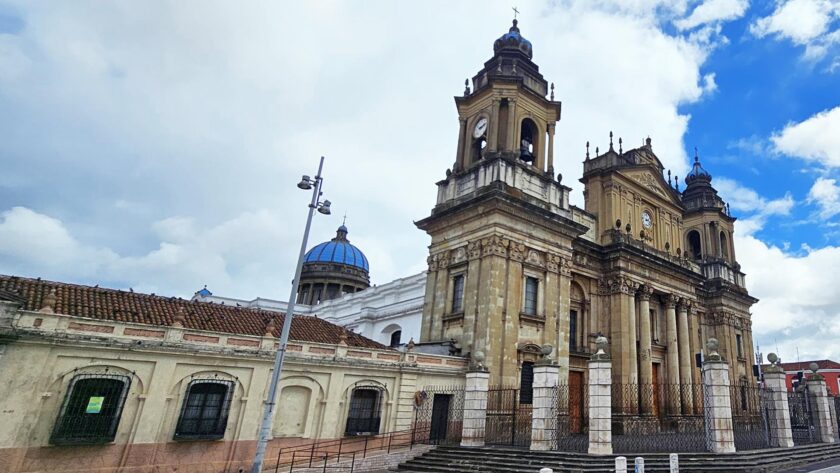The Metropolitan Cathedral of Guatemala City, also known as the “Catedral Primada Metropolitana de Santiago,” stands as an architectural masterpiece and a symbol of faith deeply rooted in the heart of Guatemala’s capital. This historic cathedral is a testament to the country’s rich heritage, with its awe-inspiring design, historical significance, and spiritual importance.
Historical Overview
The history of the Metropolitan Cathedral is intertwined with Guatemala’s complex past. Construction of the cathedral began in the early 18th century and took nearly 50 years to complete. It was consecrated in 1768, and since then, it has been a witness to the ever-evolving history of the city.
- Colonial Legacy: The Metropolitan Cathedral is a reminder of Guatemala’s colonial period when it was under Spanish rule. The architecture reflects the colonial style, characterized by grand arches, ornate facades, and imposing bell towers. The cathedral was built in a neoclassical design, a prevalent style in Spanish colonial architecture.
- Earthquakes and Restoration: Over the centuries, the cathedral has faced the wrath of natural disasters, particularly earthquakes. The building has been damaged multiple times, and extensive restoration work has been undertaken to preserve its historical and cultural significance. Today, it stands as a testament to the resilience of the Guatemalan people.
Architectural Marvel
The Metropolitan Cathedral of Guatemala City is not just a place of worship; it’s a masterpiece of architecture that showcases the skill and craftsmanship of its builders.
- Neoclassical Design: The cathedral’s neoclassical design is a striking feature. Its facade, with intricate detailing and imposing columns, stands as a testament to the architectural prowess of its time. The façade is adorned with statues and reliefs, depicting scenes from the life of Saint James, the cathedral’s patron saint.
- Bell Towers: The cathedral is renowned for its twin bell towers. These towering structures offer stunning panoramic views of Guatemala City and its surroundings. Visitors can climb the towers to appreciate the city’s beauty from above, making it a popular attraction for tourists.
- Interior Grandeur: Stepping inside the cathedral is an awe-inspiring experience. The interior is adorned with beautiful altars, intricate frescoes, and ornate decorations. The high vaulted ceilings add to the sense of grandeur, and the golden accents throughout the cathedral evoke a sense of opulence and spirituality.
- Altar of the Kings: The Altar of the Kings, or “Altar de los Reyes,” is a highlight of the cathedral’s interior. It is an intricately carved wooden altar covered in gold leaf and features life-sized statues of the Twelve Apostles, each carrying a symbol representing their role in Christianity.
Cultural Significance
The Metropolitan Cathedral is not just a historical monument; it is deeply ingrained in Guatemalan culture and identity.
- Religious Center: The cathedral remains a significant religious center for the Catholic community in Guatemala. It hosts religious ceremonies, celebrations, and events that draw worshippers and tourists alike. The cathedral is particularly bustling during religious festivals and holidays.
- Art and Culture: The cathedral is not only a place of worship but also a hub of art and culture. Its architecture, artwork, and sculptures provide valuable insights into the history and culture of Guatemala. Visitors can admire the fusion of European and indigenous elements that are woven into the cathedral’s design.
- Tourist Attraction: The Metropolitan Cathedral is a major tourist attraction in Guatemala City. Visitors from all over the world are drawn to its historical significance and architectural beauty. It is often featured on postcards and in travel guides as a must-visit destination.
A Beacon of Resilience
One of the remarkable aspects of the Metropolitan Cathedral is its resilience in the face of adversity.
- Earthquake Damage: The cathedral has weathered numerous earthquakes over the centuries, suffering significant structural damage. However, each time, it has been restored and rebuilt with painstaking care to preserve its historical and cultural importance.
- Symbol of Hope: The cathedral serves as a symbol of hope and resilience for the people of Guatemala. It stands as a testament to their ability to overcome challenges and rebuild in the face of adversity, much like the nation itself.
Visiting the Metropolitan Cathedral
If you plan to visit the Metropolitan Cathedral of Guatemala City, here are some practical tips:
- Location: The cathedral is centrally located in Guatemala City, making it easily accessible for tourists. It is situated in the historic district of the city, where you can explore other cultural and historical sites.
- Opening Hours: The cathedral is open to the public during specific hours. It’s recommended to check the current schedule before your visit, as it may vary depending on religious events and holidays.
- Dress Code: As a place of worship, it’s essential to dress modestly when visiting the cathedral. Avoid wearing revealing or inappropriate attire.
- Guided Tours: Consider taking a guided tour of the cathedral to gain a deeper understanding of its history, architecture, and cultural significance. Many tour operators in the area offer informative tours.
The Metropolitan Cathedral of Guatemala City is more than just a religious site; it’s a living testament to the country’s history, culture, and resilience. Its awe-inspiring neoclassical design, rich interior, and cultural significance make it a must-visit destination for travelers and a cherished symbol of faith and history for the people of Guatemala. As you stand before this grand edifice, you can’t help but feel a deep connection to the past and the enduring spirit of the Guatemalan people, making it a truly iconic landmark in the heart of the city.


